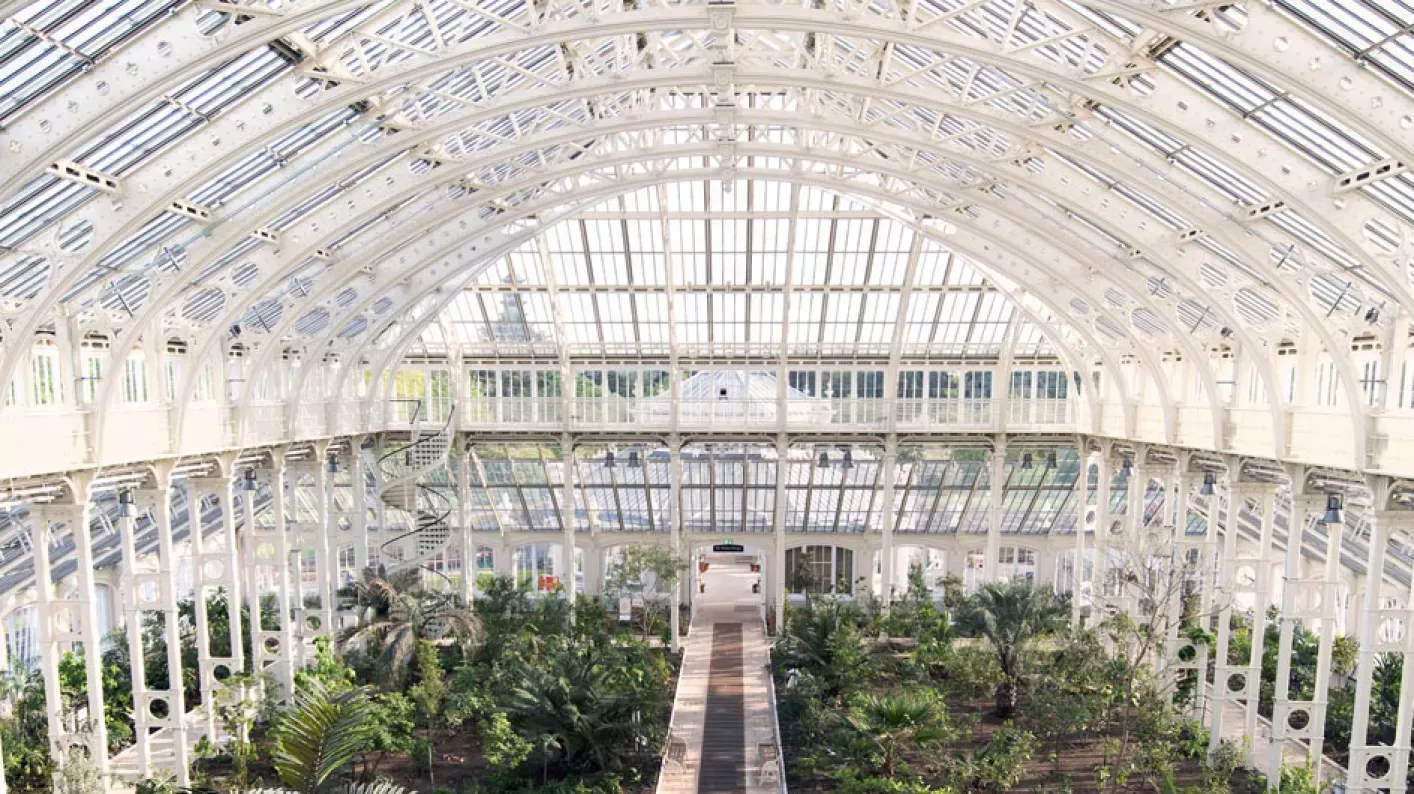Palm House
Explore this remarkable indoor rainforest and discover tropical plants from some of the most threatened environments in the world.

Travel to the depths of the rainforest inside the Palm House, where the air is heavy and dense with lush vegetation.
Wander through and you’ll discover rainforest treasures like the oldest pot plant in the world or the disease-fighting periwinkle.
Many plants in this collection are endangered in the wild, some even extinct. Others – like the rubber tree (Hevea brasiliensis), African oil palm (Elaeis guineensis), or cocoa tree (Theobroma cacao) – are a source of huge value to societies around the world for the fruit, timber, spices or medicine they produce.

Rainforest plants cover only 2% of the world’s surface but make up 50% of species – vital to sustaining life on earth. Kew scientists rely on the Palm House collection for research into medicine and sustainable cropping.
A living laboratory dedicated to the Earth’s tropical regions, the Palm House is a chance to glimpse the magic of the rainforest for yourself.
Treasures of the Palm House
Explore the world's tropical plants

A powerful medicinal plant
Learn more about the healing power of the Madagascar periwinkle (Catharanthus roseus), now used in the treatment of a number of different types of cancer.

Suicide palm
Look for young specimens of the Madagascan palm, Tahina spectabilis which lives for about 50 years, flowers once, and dies soon after.

Ancient cycads
Discover these prehistoric plants. Resembling palms, cycads were widespread over 250 million years ago, before dinosaurs and well before the appearance of flowering plants.
Explore the Palm House with Sir David Attenborough
An unexpected discovery
Many of the plants found in rainforests only exist in specific regions – requiring carefully balanced ecosystems to survive. The once-lost café marron (Ramosmania rodriguesii) is one example. Native to Rodrigues, a remote island in the middle of the Indian Ocean, it was thought to be extinct for much of the 20th century…
But in 1979, a 12-year-old-boy insisted a drawing he saw at school matched a plant growing near his house on the island. Samples were sent to Kew, and we confirmed that this young schoolboy had rediscovered the long-lost café marron!

A little bit of history
The Palm House was the first glasshouse built on this scale. It was constructed in 1844 by Richard Turner according to Decimus Burton’s designs.


Architects borrowed techniques from the ship building industry to achieve the ambitious vision – which may explain why the Palm House resembles the upturned hull of a ship.
Visiting the Palm House
Opening times
Daily, 10am to 5pm
We may occasionally need to close attractions for maintenance or visitor safety. Check for planned closures and visitor notices before you visit.
Nearest entrance
Victoria Gate
Discover more of Kew

Temperate House

Revisiting the Madagascan suicide palm: a decade on


.jpg.webp?itok=0f0rZmIL)
.jpg.webp?itok=_Hy_3dML)
.jpg.webp?itok=t1EtiRfA)
.jpg.webp?itok=iUZmE68P)